COVID-19 pandemic dynamics in South Africa and epidemiological characteristics of three variants of concern (Beta, Delta, and Omicron)
- PMID: 35943138
- PMCID: PMC9363123
- DOI: 10.7554/eLife.78933
COVID-19 pandemic dynamics in South Africa and epidemiological characteristics of three variants of concern (Beta, Delta, and Omicron)
Abstract
Severe acute respiratory syndrome coronavirus 2 (SARS-CoV-2) variants of concern (VOCs) have been key drivers of new coronavirus disease 2019 (COVID-19) pandemic waves. To better understand variant epidemiologic characteristics, here we apply a model-inference system to reconstruct SARS-CoV-2 transmission dynamics in South Africa, a country that has experienced three VOC pandemic waves (i.e. Beta, Delta, and Omicron BA.1) by February 2022. We estimate key epidemiologic quantities in each of the nine South African provinces during March 2020 to February 2022, while accounting for changing detection rates, infection seasonality, nonpharmaceutical interventions, and vaccination. Model validation shows that estimated underlying infection rates and key parameters (e.g. infection-detection rate and infection-fatality risk) are in line with independent epidemiological data and investigations. In addition, retrospective predictions capture pandemic trajectories beyond the model training period. These detailed, validated model-inference estimates thus enable quantification of both the immune erosion potential and transmissibility of three major SARS-CoV-2 VOCs, that is, Beta, Delta, and Omicron BA.1. These findings help elucidate changing COVID-19 dynamics and inform future public health planning.
Keywords: COVID-19; SARS-CoV-2; epidemiology; global health; immune evasion; none; reinfection rate; transmissibility; variant of concern.
© 2022, Yang and Shaman.
Conflict of interest statement
WY No competing interests declared, JS JS and Columbia University disclose partial ownership of SK Analytics. JS discloses consulting for BNI
Figures


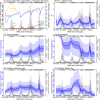

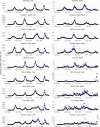
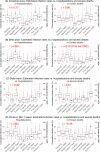
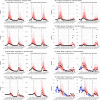
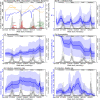
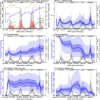
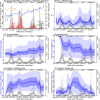
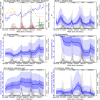
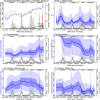

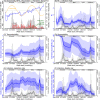
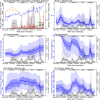














Update of
-
COVID-19 pandemic dynamics in South Africa and epidemiological characteristics of three variants of concern (Beta, Delta, and Omicron).medRxiv [Preprint]. 2022 Jun 29:2021.12.19.21268073. doi: 10.1101/2021.12.19.21268073. medRxiv. 2022. Update in: Elife. 2022 Aug 09;11:e78933. doi: 10.7554/eLife.78933. PMID: 34981071 Free PMC article. Updated. Preprint.
Similar articles
-
COVID-19 pandemic dynamics in South Africa and epidemiological characteristics of three variants of concern (Beta, Delta, and Omicron).medRxiv [Preprint]. 2022 Jun 29:2021.12.19.21268073. doi: 10.1101/2021.12.19.21268073. medRxiv. 2022. Update in: Elife. 2022 Aug 09;11:e78933. doi: 10.7554/eLife.78933. PMID: 34981071 Free PMC article. Updated. Preprint.
-
Spatiotemporal prevalence of COVID-19 and SARS-CoV-2 variants in Africa.Front Public Health. 2025 Feb 20;13:1526727. doi: 10.3389/fpubh.2025.1526727. eCollection 2025. Front Public Health. 2025. PMID: 40051513 Free PMC article.
-
The Biological Functions and Clinical Significance of SARS-CoV-2 Variants of Corcern.Front Med (Lausanne). 2022 May 20;9:849217. doi: 10.3389/fmed.2022.849217. eCollection 2022. Front Med (Lausanne). 2022. PMID: 35669924 Free PMC article. Review.
-
A simple model to estimate the transmissibility of the Beta, Delta, and Omicron variants of SARS-COV-2 in South Africa.Math Biosci Eng. 2022 Jul 22;19(10):10361-10373. doi: 10.3934/mbe.2022485. Math Biosci Eng. 2022. PMID: 36031998
-
Is the SARS CoV-2 Omicron Variant Deadlier and More Transmissible Than Delta Variant?Int J Environ Res Public Health. 2022 Apr 11;19(8):4586. doi: 10.3390/ijerph19084586. Int J Environ Res Public Health. 2022. PMID: 35457468 Free PMC article. Review.
Cited by
-
Estimating time-varying epidemiological parameters and underreporting of Covid-19 cases in Brazil using a mathematical model with fuzzy transitions between epidemic periods.PLoS One. 2024 Jun 17;19(6):e0305522. doi: 10.1371/journal.pone.0305522. eCollection 2024. PLoS One. 2024. PMID: 38885221 Free PMC article.
-
Mapping the Early Dispersal Patterns of SARS-CoV-2 Omicron BA.4 and BA.5 Subvariants in the Absence of Travel Restrictions and Testing at the Borders in Europe.Viruses. 2022 Dec 31;15(1):133. doi: 10.3390/v15010133. Viruses. 2022. PMID: 36680171 Free PMC article.
-
Co-display of diverse spike proteins on nanoparticles broadens sarbecovirus neutralizing antibody responses.iScience. 2022 Dec 22;25(12):105649. doi: 10.1016/j.isci.2022.105649. Epub 2022 Nov 22. iScience. 2022. PMID: 36439375 Free PMC article.
-
Global Distribution, Dispersal Patterns, and Trend of Several Omicron Subvariants of SARS-CoV-2 across the Globe.Trop Med Infect Dis. 2022 Nov 12;7(11):373. doi: 10.3390/tropicalmed7110373. Trop Med Infect Dis. 2022. PMID: 36422924 Free PMC article.
-
Longitudinal Association of COVID-19 Hospitalization and Death with Online Search for Loss of Smell or Taste.Emerg Infect Dis. 2023 Aug;29(8):1711-1713. doi: 10.3201/eid2908.230071. Emerg Infect Dis. 2023. PMID: 37486228 Free PMC article.
References
-
- Abu-Raddad LJ, Chemaitelly H, Ayoub HH, Yassine HM, Benslimane FM, Al Khatib HA, Tang P, Hasan MR, Coyle P, AlMukdad S, Al Kanaani Z, Al Kuwari E, Jeremijenko A, Kaleeckal AH, Latif AN, Shaik RM, Abdul Rahim HF, Nasrallah GK, Al Kuwari MG, Butt AA, Al Romaihi HE, Al-Thani MH, Al Khal A, Bertollini R. Severity, Criticality, and Fatality of the SARS-CoV-2 Beta Variant. Clinical Infectious Diseases; 2021a. - DOI - PMC - PubMed
-
- Allen H, Vusirikala A, Flannagan J, Twohig KA, Zaidi A, Chudasama D, Lamagni T, Groves N, Turner C, Rawlinson C, Lopez-Bernal J, Harris R, Charlett A, Dabrera G, Kall M, COVID-19 Genomics UK (COG-UK Consortium) Household transmission of COVID-19 cases associated with SARS-CoV-2 delta variant (B.1.617.2): national case-control study. The Lancet Regional Health. Europe. 2022;12:e100252. doi: 10.1016/j.lanepe.2021.100252. - DOI - PMC - PubMed
-
- Andrews N, Stowe J, Kirsebom F, Toffa S, Rickeard T, Gallagher E, Gower C, Kall M, Groves N, O’Connell AM, Simons D, Blomquist PB, Zaidi A, Nash S, Aziz N, Thelwall S, Dabrera G, Myers R, Amirthalingam G, Gharbia S, Barrett JC, Elson R, Ladhani SN, Ferguson N, Zambon M, Campbell CN, Brown K, Hopkins S, Chand M, Ramsay M, Bernal JL. Effectiveness of COVID-19 Vaccines against the Omicron (B.1.1.529) Variant of Concern. medRxiv. 2021 doi: 10.1101/2021.12.14.21267615. - DOI - PubMed
Publication types
MeSH terms
Grants and funding
LinkOut - more resources
Full Text Sources
Medical
Miscellaneous

